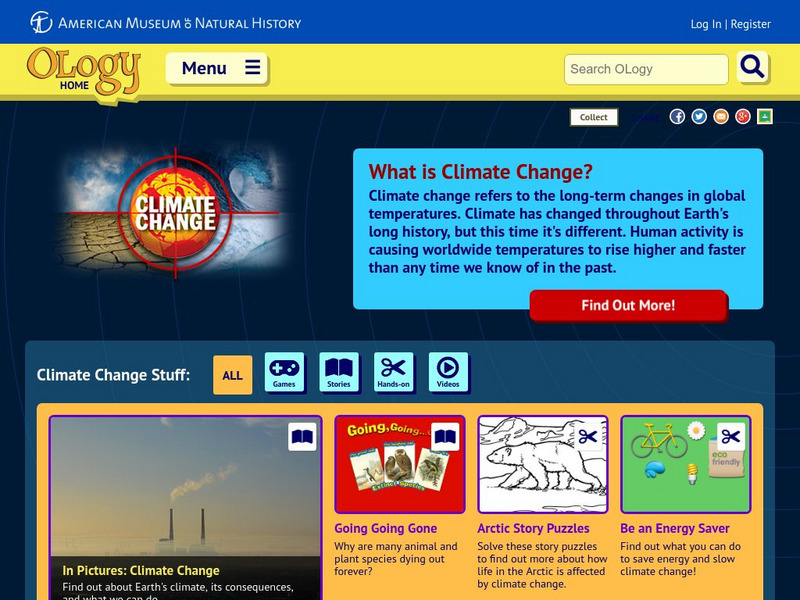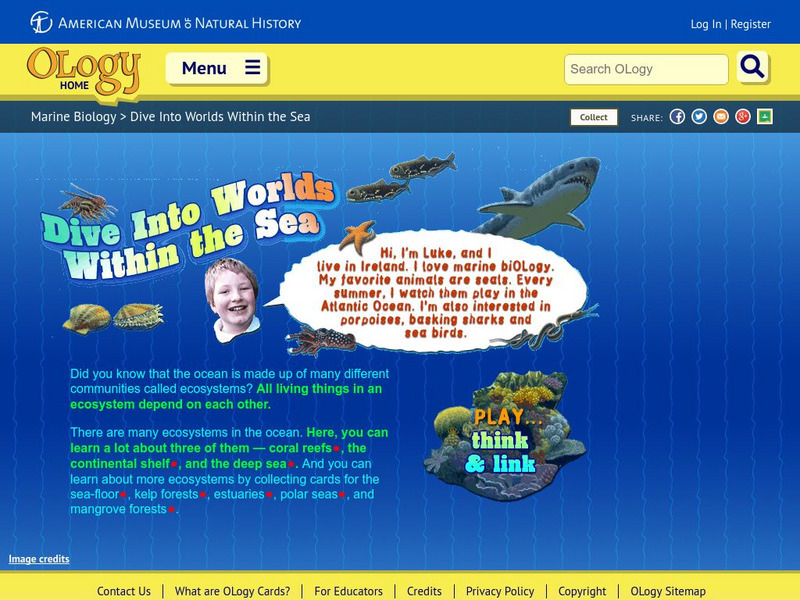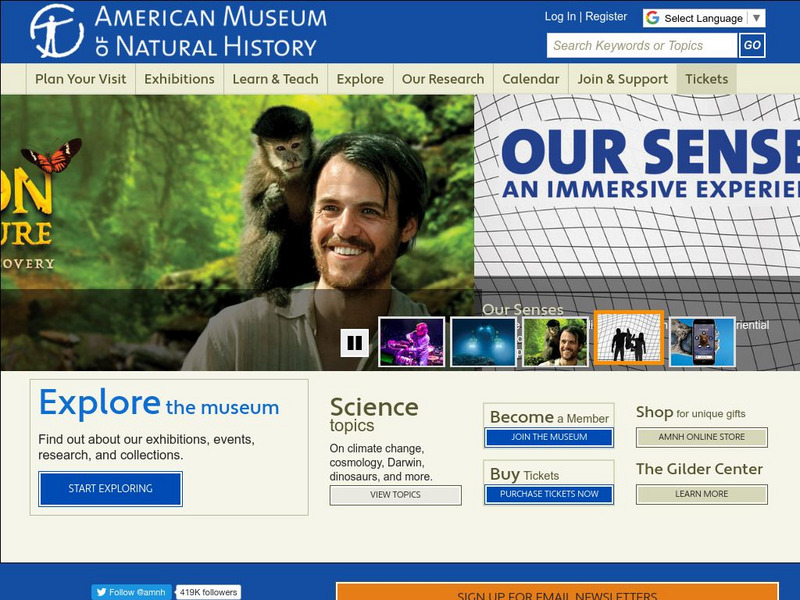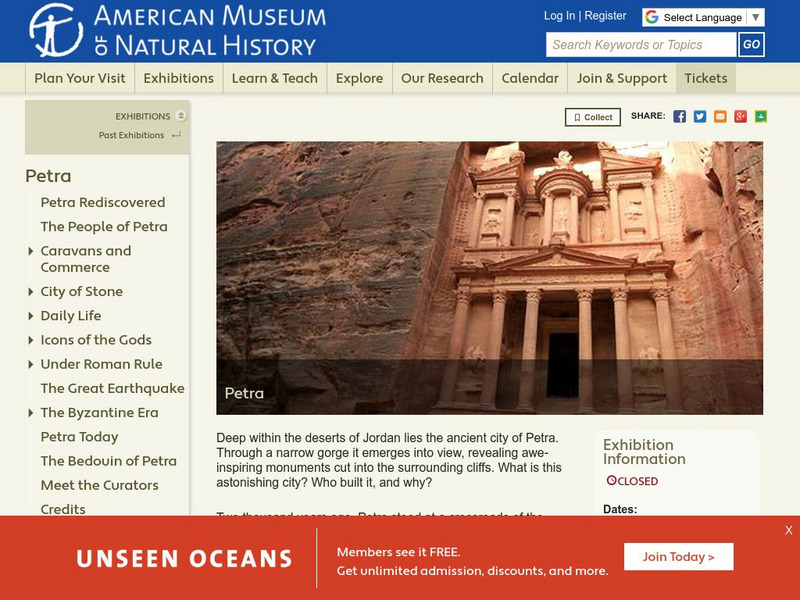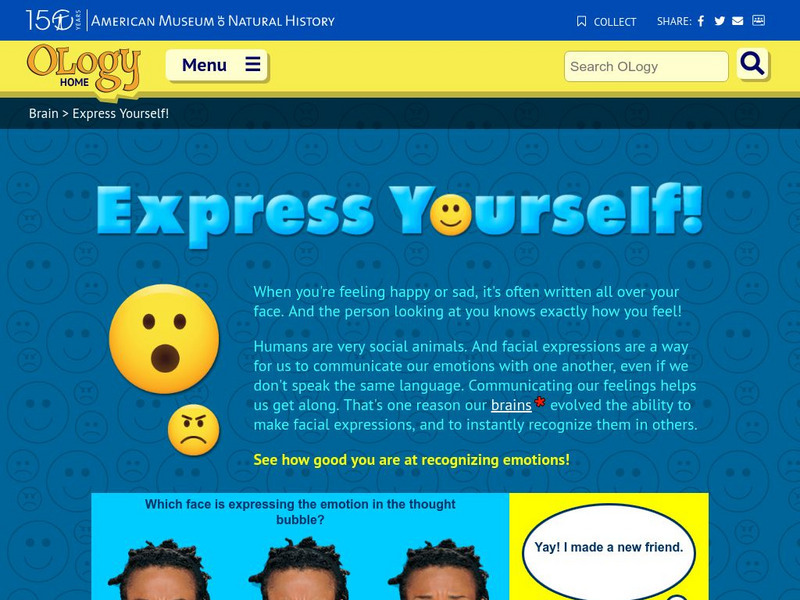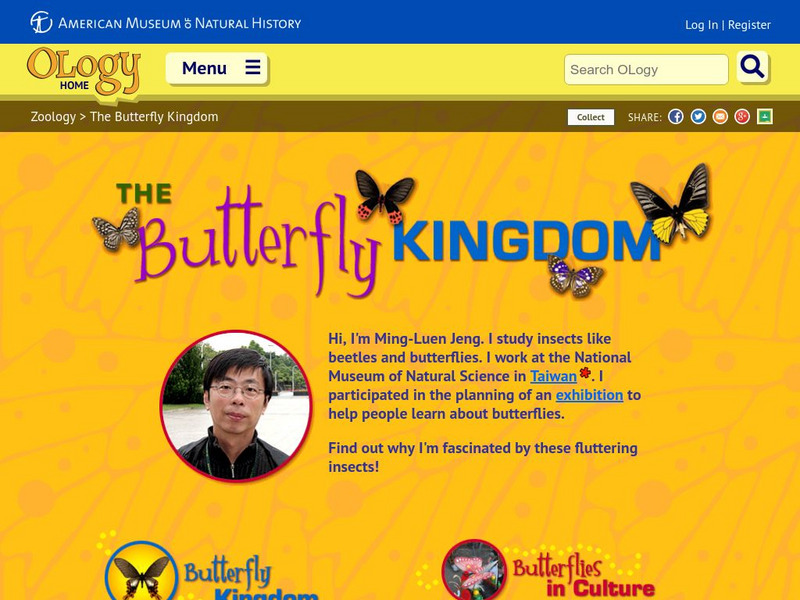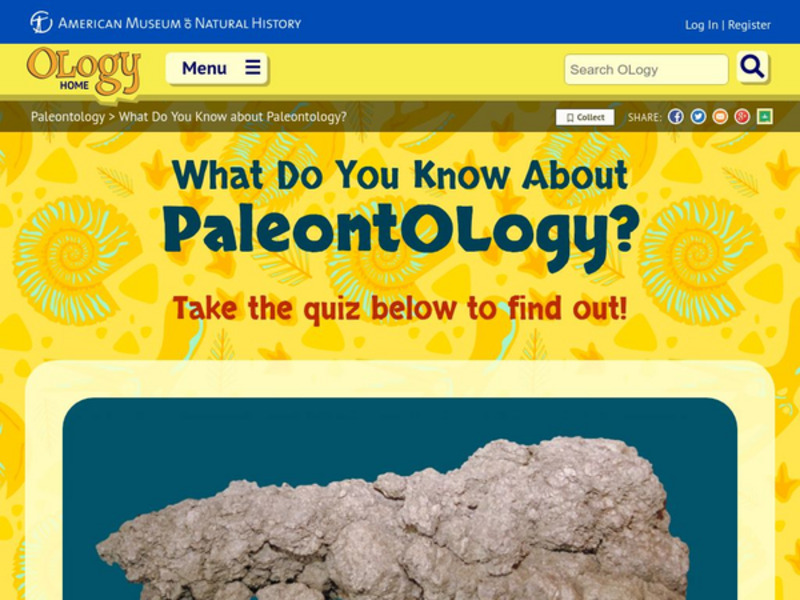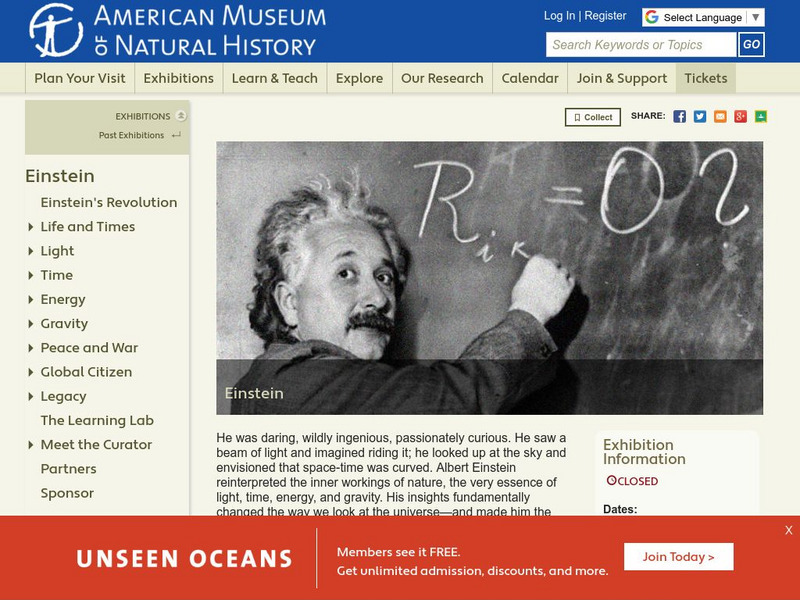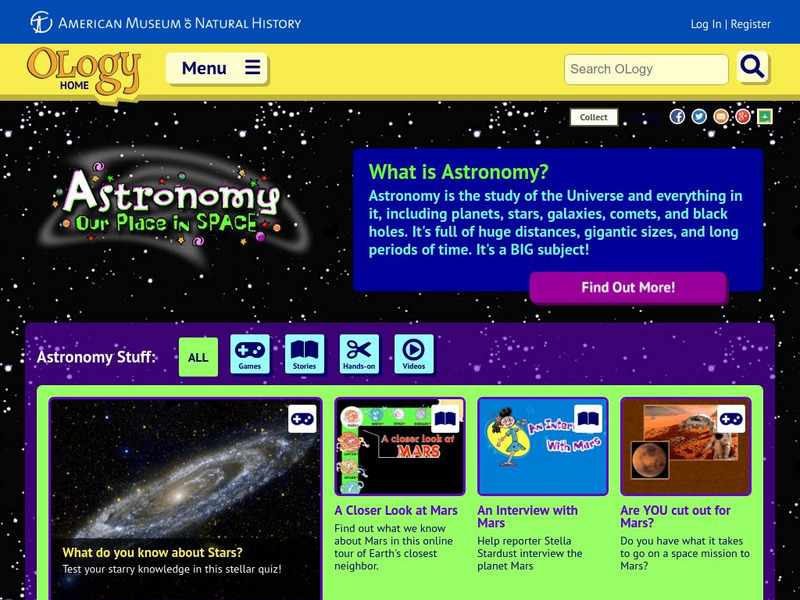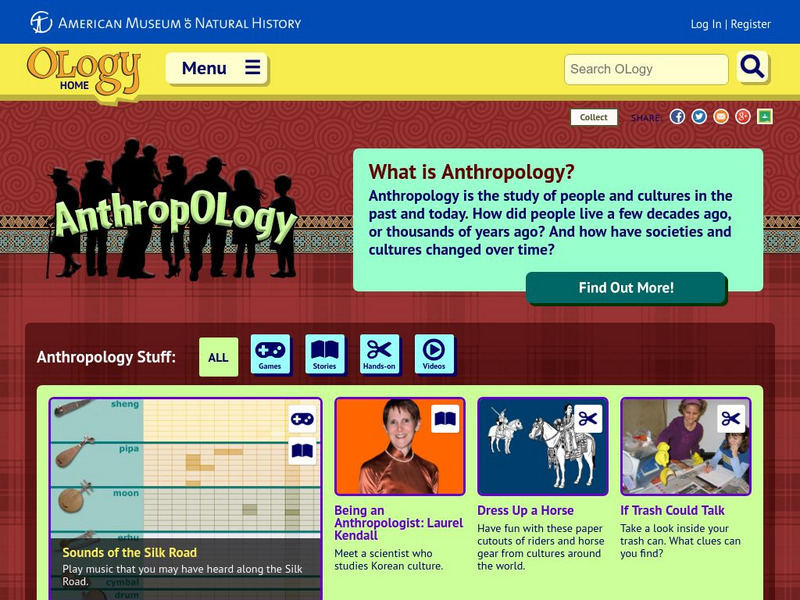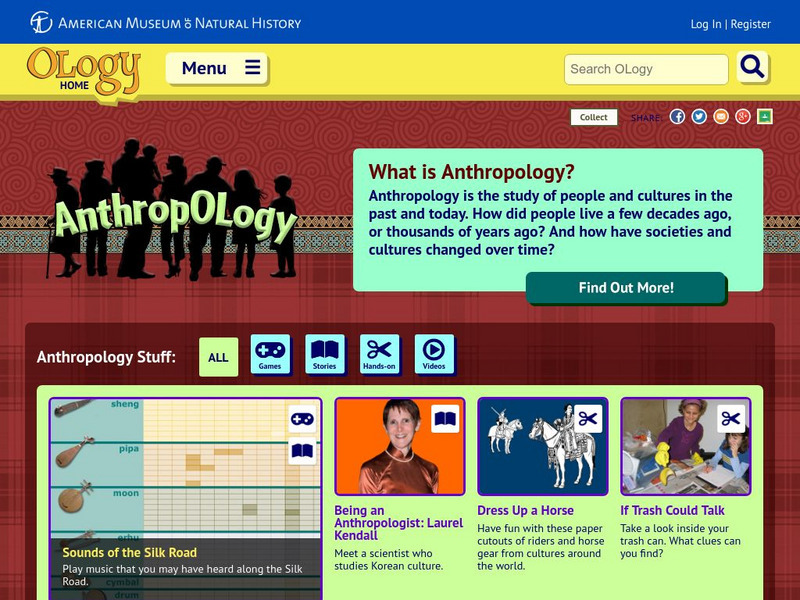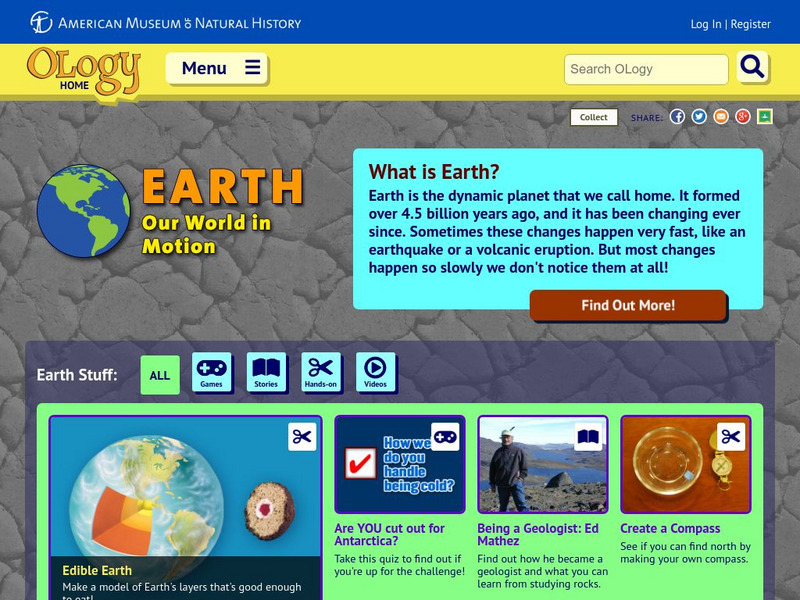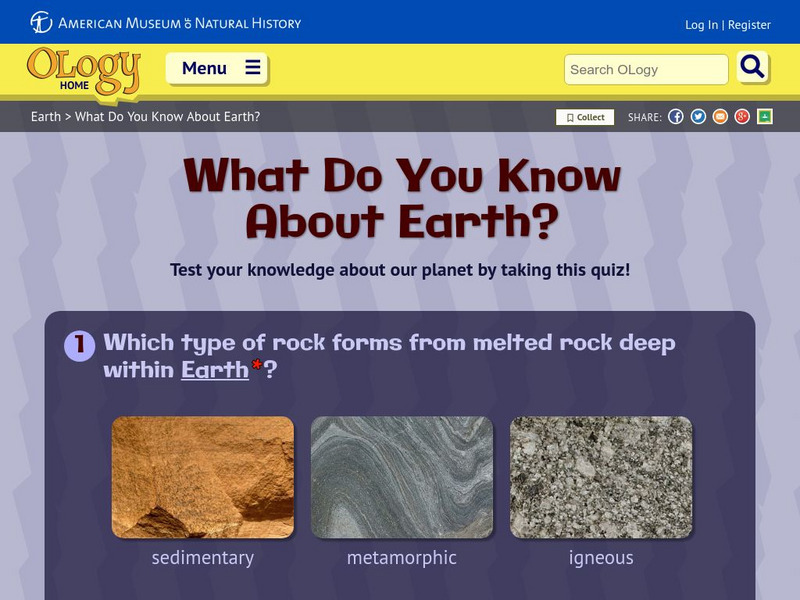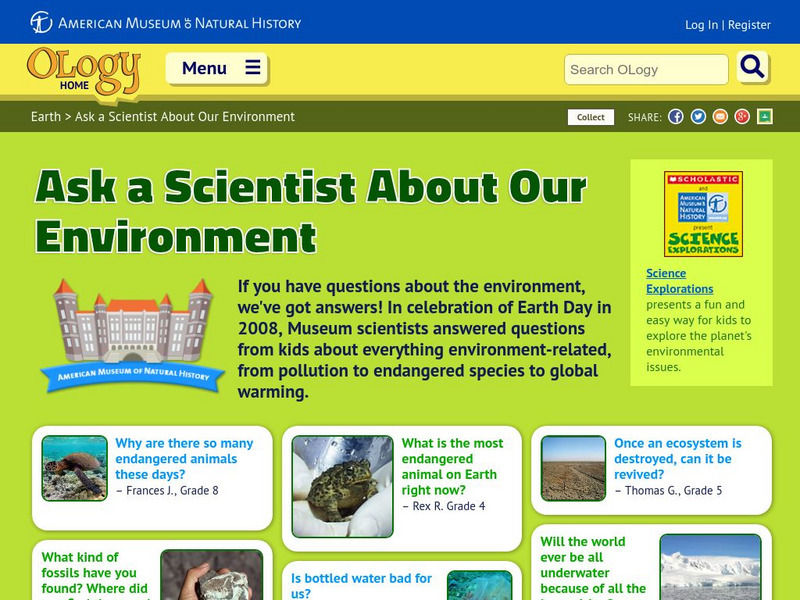Hi, what do you want to do?
American Museum of Natural History
American Museum of Natural History: Ology: Climate Change
This resource offers a large collection of games, puzzles, activities, and information pages on the topic of climate change.
American Museum of Natural History
American Museum of Natural History: Dive Into Worlds Within the Sea
Think and Link to investigate three different ecosystem either the deep sea, coral reef or continental shelf. By connecting the dots students make a food chain to see how organisms in each habitat depend on each other.
American Museum of Natural History
American Museum of Natural History: Amnh Expeditions
Learn about the adventurous and educational travel programs of the American Museum of Natural History, which arranges explorations of the world in the company of museum scientists, educators and curators.
American Museum of Natural History
American Museum of Natural History
Online home of the American Museum of Natural History. Find out about the museum's latest events, exhibitions, and programs.
American Museum of Natural History
American Museum of Natural History: Petra: Lost City of Stone
Explore present-day Petra and its past with this resource. Click on "View Panorama" at the bottom of the screen for a trip all around this incredible ancient city. This beautiful site explores the people of Petra, their daily life, and...
American Museum of Natural History
American Museum of Natural History: Ology: Express Yourself
Test your skill at reading the emotion expressed in a face in these two matching games.
American Museum of Natural History
American Museum of Natural History: Ology: Paleontology: The Big Dig
A collection of online games, virtual puzzles, experiments, and interviews with experts to immerse students into the world of paleontology.
American Museum of Natural History
American Museum of Natural History: Anthropology: Sounds of the Silk Road
Travel the tales and sounds of the Silk Road through this resource and understand how music shaped Asian, and eventually, western cultures. You can create your own music to share with your friends, and gain knowledge about common...
American Museum of Natural History
American Museum of Natural History: Ology: The Butterfly Kingdom
Learn about Taiwan's amazing wealth of butterflies, many of which can be found nowhere else in the world. See how butterflies have influenced Taiwanese culture, how some people have made a business from butterflies, and about efforts...
American Museum of Natural History
American Museum of Natural History: O Logy: What Do You Know? Archaeology
A ten question quiz on the study of archaeology.
American Museum of Natural History
American Museum of Natural History: O Logy: What Do You Know? Dinosaurs
Test knowledge about dinosaurs with this ten question quiz.
American Museum of Natural History
American Museum of Natural History: Einstein
This resource is a companion site of a retrospective exhibition held at the American Museum of Natural History in 2002-03, Einstein covers the life and scientific theories of this revolutionary scientist. Includes numerous primary source...
American Museum of Natural History
American Museum of Natural History: O Logy: What Do You Know? Climate Change
Test your knowledge on climate change with this short quiz.
American Museum of Natural History
American Museum of Natural History: Darwin
This resource is an online companion of museum-mounted exhibition about Darwin and his revolutionary theory. It covers Darwin's upbringing, influences, and discoveries employing a rich mix of media: text, photographs, videos, sound...
American Museum of Natural History
American Museum of Natural History: O Logy: Astronomy: Our Place in Space
This resource is a place for learning all about astronomy--stargazing, planets, space science, and interesting astronomical phenomena and discoveries. Explore, ask questions, find information, and meet American Museum of Natural History...
American Museum of Natural History
American Museum of Natural History: Anthropology
This resource allows students to discover the world of anthropology in a completely new way. The signficance of studying the human race is explained, along with interactive games, activities, and interviews. Design an ancient flowerpot,...
American Museum of Natural History
American Museum of Natural History: Anthropology
This resource allows students to discover the world of anthropology in a completely new way. The signficance of studying the human race is explained, along with interactive games, activities, and interviews. Design an ancient flowerpot,...
American Museum of Natural History
American Museum of Natural History: O Logy: Earth: Our World in Motion
This resource is a place for learning all about the Earth--the Earth's layers, its history, rocks and minerals, and interesting Earth science facts and discoveries. Explore, ask questions, find information, and meet American Museum of...
American Museum of Natural History
American Museum of Natural History: Paleont O Logy: The Big Dig
This colorful and inviting resource houses tons of paleontology activities to explore. Play the Layers of Time puzzle game, create your own make-believe dig site by burying chicken bones in plaster of Paris, learn how to draw dinosaurs,...
American Museum of Natural History
American Museum of Natural History: O Logy: Layers of Time: Fossil Game
Game through which students order layers of sedimentary rock, from oldest to newest, based on the type of fossils they contain.
American Museum of Natural History
American Museum of Natural History: O Logy: Meet the Zooarchae O Logist
An interview with Sandra Olsen, a zooarchaeologist studying the history of horses in Kazakhstan. Discover what zooarchaeologists work on in the interview.
American Museum of Natural History
American Museum of Natural History: O Logy: What Do You Know? Earth Science
Take a ten question quiz on the Earth's surface.
American Museum of Natural History
American Museum of Natural History: O Logy: Ask a Scientist
A browsable collection of environment-related questions posed by elementary- and middle-school students to the scientists of the American Museum of Natural History in honor of Earth Day. Great questions and great answers.
American Museum of Natural History
American Museum of Natural History: O Logy: Stuff to Do: Create a Coral Reef
Detailed instructions, with photographs for every step, for how to build a coral reef diorama.





